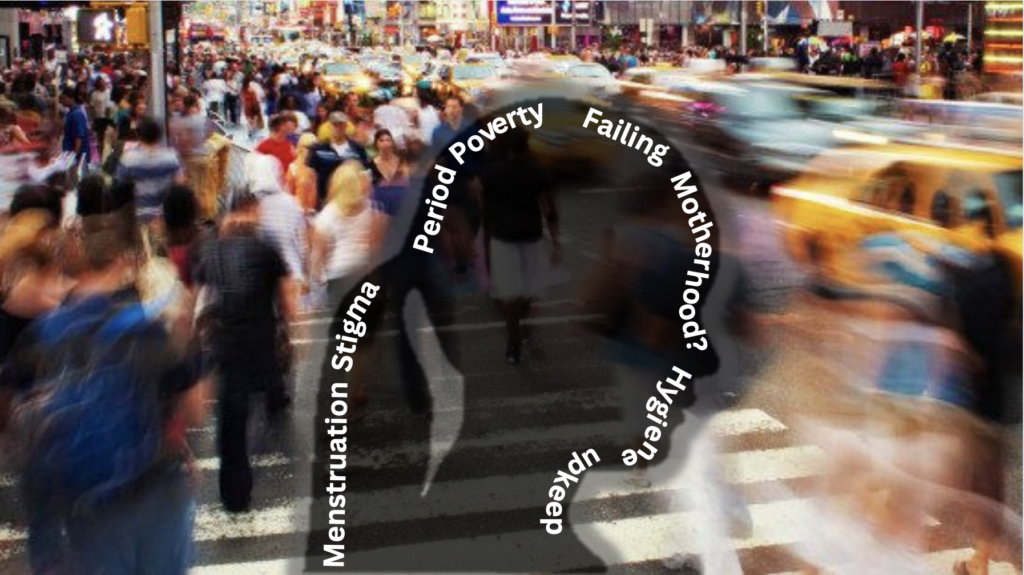
The prevalence of homelessness in New York City makes it impossible for it to go unnoticed, especially by native New Yorkers. While the challenges faced by the overall population of the unhoused are widely known, what about the unique and less visible struggles that homeless women endure?
Challenges of Homeless Motherhood
Homeless shelters in New York City are notoriously known among unhoused people for their harsh and unpleasant conditions (Roberts et al., 2022). Paulette, a graduate of First Step, a work training program for homeless and low-income women, described her experience living in a shelter with her children:
“The conditions were not only bad; they were dangerous. It was cramped, there were rats climbing up the stairs, and my daughter was electrocuted by a faulty outlet… Depression hit again, and I felt like a failure. I remember asking myself, ‘What mother would let it happen? What did I do wrong?”
Due to the deprivation of resources and terrible conditions, mothers can feel like failures, develop negative self-concepts and experience deteriorating mental and physical health (Reilly et al., 2018).
A study comparing the health outcomes of women and children living in New York City homeless shelters to those living in public housing showed that mothers living in homeless shelters experienced poorer health consequences. In particular, they were more likely to experience anemia (8.9%) and asthma or acute lung disease (9.6%) during pregnancy due to a lack of access to healthcare and foods that fulfill their nutritional needs. Mothers experiencing homelessness also were more likely to have premature babies, children with low birth weight, and babies requiring admission to intensive care units after delivery (Reilly et al., 2018)
Homeless Women’s Struggles with Menstruation and Personal Hygiene
Considering the lack of cleanliness in shelter bathrooms, and lacking public bathrooms, many homeless women find their needs for personal hygiene falling short. Those who menstruate while experiencing homelessness in New York City can lack access to spaces where they can comfortably attend to menstrual needs, as well as bathing and laundering facilities (Sommer et al., 2020). As a result of the lack of access to such provisions, gynecological issues, such as urinary tract infections and yeast infections, are prevalent among homeless women (Parillo and Feller, 2017).
Poor maintenance of personal hygiene may further add to the menstrual stigma and shame homeless women experience. The emphasis on obscurity surrounding menstruation has led women to feel ashamed of such a natural process. One woman facing homelessness described it as “…when you can’t clean yourself, you don’t want to be out, you don’t want to be seen, because you feel like everybody else can smell and see you” (Sommer et al., 2020).
Improving Homeless Women’s Lives
It is essential to examine challenges that correspond to specific demographics of people undergoing homelessness to provide customized services that will assist with such troubles. Food Bank, for example, has launched a campaign, “Woman to Woman,” which secures necessities like period, baby, and hygiene products for those in need of basic necessities. Solving this issue on a bigger scale might not be so easy but acknowledging and delving deeper into subpopulations, like menstruators and mothers, can give rise to their visibility and open up more programs calling for more accessibility of their necessities.
References
Marni, S., Gruer, C., Smith, R. C., Maroko, A., & Hopper, K. (2020). Menstruation and homelessness: Challenges faced living in shelters and on the street in New York City. Health & Place, 66, 1–7. https://doi.org/10.1016/j.healthplace.2020.102431
Parrillo, A., & Feller, E. (2017). Menstrual Hygiene Plight of Homeless Women, a Public Health Disgrace. Rhode Island Medical Journal, 100(12), 14–15. https://pubmed.ncbi.nlm.nih.gov/29190837/
Roberts, T.-A. (n.d.). What is Period Stigma? U by Kotex®. Retrieved December 3, 2022, from https://www.ubykotex.com/en-us/periods/addressing-societal-issues-around-periods
Reilly, K. H., Zimmerman, R., Huynh, M., Kennedy, J., & McVeigh, K. H. (2018). Characteristics of Mothers and Infants Living in Homeless Shelters and Public Housing in New York City. Maternal and Child Health Journal, 23(5), 572–577. https://doi.org/10.1007/s10995-018-2672-1
Roberts, G., Hicks, N., Sheehan, K., & Fonrouge, G. (2022, March 9). “I feel like I’m back in jail”: Life inside NYC’s broken shelter system. New York Post.https://nypost.com/2022/03/08/the-miserable-life-inside-nycs-broken-shelter-system/
Sebert Kuhlmann, A., Peters Bergquist, E., Danjoint, D., & Wall, L. L. (2019). Unmet menstrual hygiene needs among low-income women. Obstetrics & Gynecology, 133(2), 238–244. https://doi.org/10.1097/aog.0000000000003060
Shan LeeAnn, & Sandler Matt. (2016). Addressing the Homelessness Crisis in New York City: Increasing Accessibility for Persons With Severe and Persistent Mental Illness. Columbia University Libraries, VII, 50–58. https://doi.org/10.7916/D82J6C8K
Unique Challenges of Women Experiencing Homelessness – Career and Recovery Resources Inc. (n.d.). Retrieved November 3, 2022, from https://www.careerandrecovery.org/unique-challenges-of-women-experiencing-homelessness/
Wasserman, J. A., Clair, J. M., & Platt, C. (2012). The “Homeless Problem” and the Double Consciousness*. Sociological Inquiry, 82(3), 331–355. https://doi.org/10.1111/j.1475-682x.2012.00410.x
Why Are So Many People Homeless? (2022, January 4). Coalition for the Homeless. https://www.coalitionforthehomeless.org/why-are-so-many-people-homeless/
Woman to Woman Campaign. (2022, April 21). Food Bank for New York City. https://www.foodbanknyc.org/womantowoman/